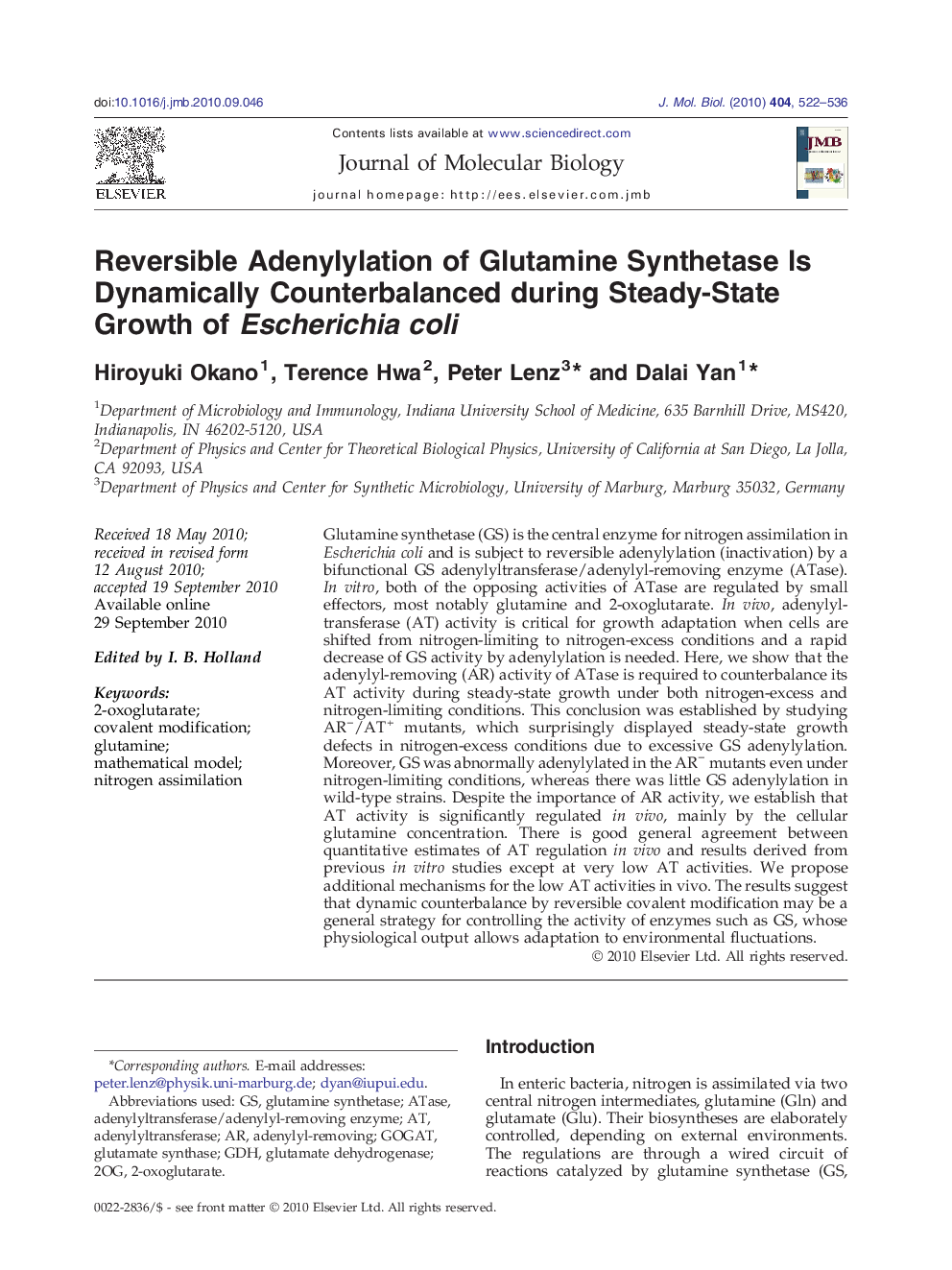| کد مقاله | کد نشریه | سال انتشار | مقاله انگلیسی | نسخه تمام متن |
|---|---|---|---|---|
| 2185741 | 1096005 | 2010 | 15 صفحه PDF | دانلود رایگان |

Glutamine synthetase (GS) is the central enzyme for nitrogen assimilation in Escherichia coli and is subject to reversible adenylylation (inactivation) by a bifunctional GS adenylyltransferase/adenylyl-removing enzyme (ATase). In vitro, both of the opposing activities of ATase are regulated by small effectors, most notably glutamine and 2-oxoglutarate. In vivo, adenylyltransferase (AT) activity is critical for growth adaptation when cells are shifted from nitrogen-limiting to nitrogen-excess conditions and a rapid decrease of GS activity by adenylylation is needed. Here, we show that the adenylyl-removing (AR) activity of ATase is required to counterbalance its AT activity during steady-state growth under both nitrogen-excess and nitrogen-limiting conditions. This conclusion was established by studying AR−/AT+ mutants, which surprisingly displayed steady-state growth defects in nitrogen-excess conditions due to excessive GS adenylylation. Moreover, GS was abnormally adenylylated in the AR− mutants even under nitrogen-limiting conditions, whereas there was little GS adenylylation in wild-type strains. Despite the importance of AR activity, we establish that AT activity is significantly regulated in vivo, mainly by the cellular glutamine concentration. There is good general agreement between quantitative estimates of AT regulation in vivo and results derived from previous in vitro studies except at very low AT activities. We propose additional mechanisms for the low AT activities in vivo. The results suggest that dynamic counterbalance by reversible covalent modification may be a general strategy for controlling the activity of enzymes such as GS, whose physiological output allows adaptation to environmental fluctuations.
Research Highlights
► Combined experimental and computational study on covalent modification of GS.
► Deadenylylation is required to control GS adenylylation irrespective of nitrogen availability.
► Mathematical model shows in vivo regulation of adenylylation by metabolite pool sizes.
► Results suggest a general strategy of a removing activity for controlling protein modification.
Journal: Journal of Molecular Biology - Volume 404, Issue 3, 3 December 2010, Pages 522–536